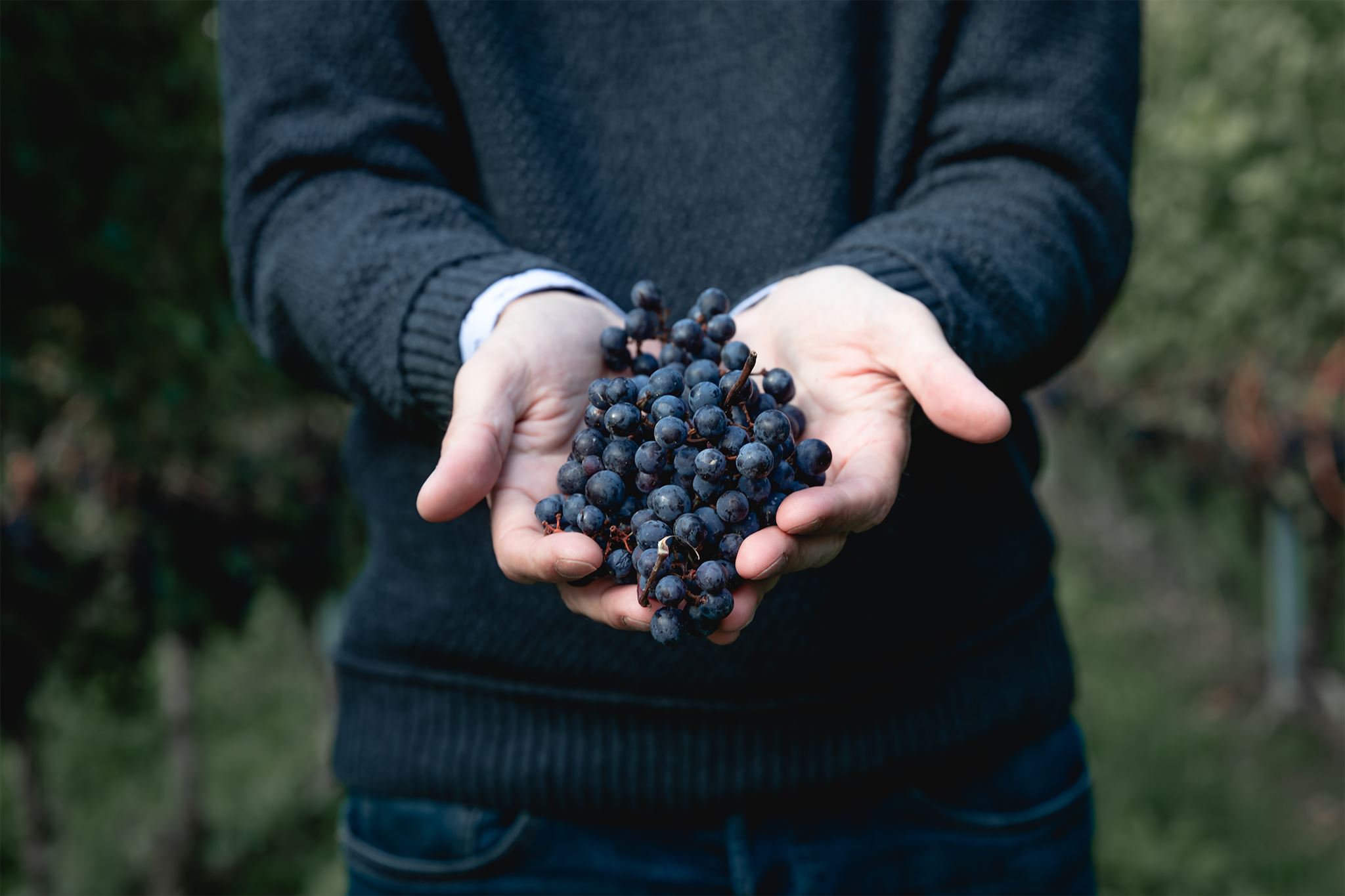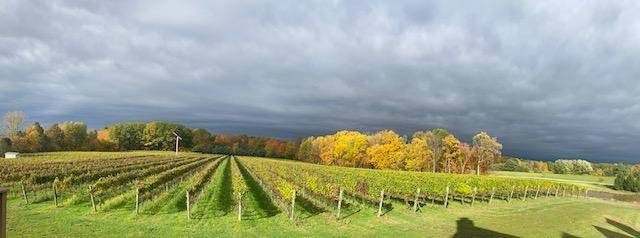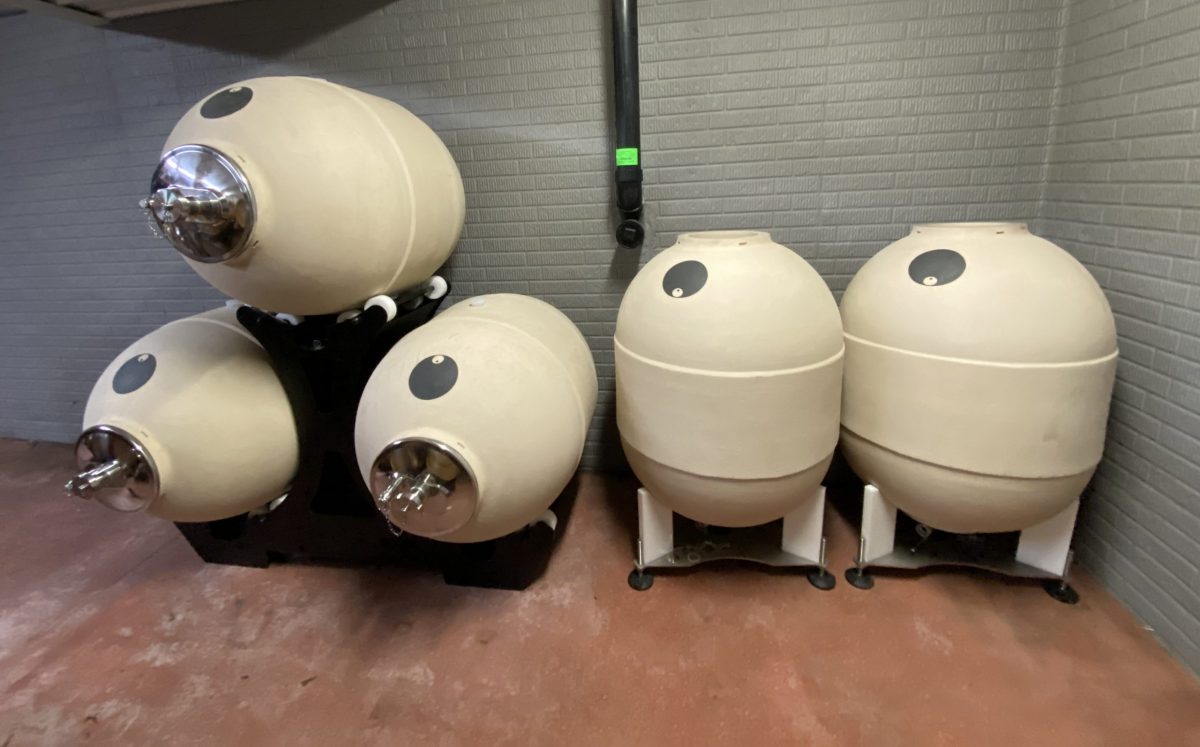If you love wine like we do, you know a thing or two about grape varieties. You can probably tell a glass of Pinot Noir from a Cabernet Sauvignon by looks alone. You likely know that if you’re in the mood for a full-bodied white, Chardonnay is the way to go. And maybe you can even sniff out the distinct aromatics of a Gewürztraminer from across a room.
But do you know the origin story of these grapes? Where they came from, how old they are, or how they’re related? If not, you’re in luck. Here are the birthplaces and backstories of all of the grape varieties we grow at M Cellars.
Rkatsiteli
Origins: Ancient Georgia
Backstory: This ancient grape is from the Republic of Georgia, the oldest wine-producing region on the planet. It’s the oldest grape variety still cultivated today. Clay vessels have been found with seeds of Rkatsiteli grapes dating all the way back to 3000 BC.
Pinot Noir
Origins: Burgundy Region, France
Backstory: Wild cousins of this grape were used to make wine as far back as the 1st century AD. In addition to being ancient, Pinot Noir is one of the most prolific grapes in history — with descendants including Cabernet Sauvignon, Riesling, Sauvignon Blanc and Chardonnay. Pinot Noir is so finicky and difficult to cultivate that it’s known as the heartbreak grape.
Grüner Veltliner
Likely Origins: Austria
Backstory: Grüner Veltliner is believed to date back to Roman times, though its modern name was only firmly established in the 1930s. It is a cross between Savagnin (also related to Sauvignon Blanc, Gewürztraminer, and the Pinot family) and St. Georgener-rebe (a virtually extinct Austrian grape). It is the most widely planted grape in Austria.
Glera
Possible Origins: Prosecco, Veneto Region, Italy
Backstory: Better known as Prosecco, the Glera grape dates back to Roman times, with possible origins somewhere between Slovenia and the village of Prosecco in Italy. Its distant past is complicated and not totally clear. But since it’s so delicious, we’ll let that slide. In 2009, the Prosecco name became geographically protected, so it’s now known as Glera outside of the Prosecco region.
Pinot Gris
Origins: Burgundy Region, France
Backstory: Present since the middle ages, Pinot Gris is a genetic mutation of Pinot Noir. The Pinot Gris grape is genetically identical to the Pinot Grigio grape, which is grown in Italy.
Petit Verdot
Origins: Bordeaux Region, France
Backstory: Cultivated by the Romans almost a thousand years ago, Petit Verdot is a late-ripening variety used in Bordeaux-style blends like our Meritage.
Chardonnay
Origins: Burgundy Region, France
Backstory: Believed to be first planted in the 12th century, DNA profiling from geneticists at the University of California, Davis shows that Chardonnay is a cross between Pinot Noir and a now rare grape called Gouais Blanc. The Romans are thought to have brought Gouais Blanc from Croatia.
Reisling
Likely Origins: Valley of the Rhine, Germany
Backstory: The earliest recorded reference is from 1402 in the city of Worms, Germany. Resiling shares one parent, the now rare Gouais Blanc, with Chardonnay. The other parent is a cross between a wild vine and Traminer.
Cabernet Franc
Likely Origins: Basque Region, Spain
Backstory: Likely originating in Basque Country before the 17th century, Cab Franc became an essential Bordeaux varietal, especially for blends. It is a parent to both Cabernet Sauvignon and Merlot. Cab Franc grows in both cool and warm climates.
Cabernet Sauvignon
Origins: Bordeaux Region, France
Backstory: This was largely a mystery until 1997, when our friends at UC Davis confirmed that the grape was cross between Cabernet Franc and Sauvignon Blanc. As the story goes, the cross was a 17th-century accident, when a Cab Franc grape was mistakenly bred with a Sauv Blanc grape.
Origins: Bordeaux Region, France
Backstory: The earliest recorded mention of the grape dates to 1784. The name has been associated with the French word “merle,” which translates to “blackbird” (both share a similar black-and-blue color). Merlot is an offspring of Cabernet Franc and is a half-sibling of Carménère, Malbec and Cabernet Sauvignon.
Gewürztraminer
Likely Origins: South Tyrol, Italy
Backstory: Gewürztraminer’s history and lineage are murky, but it has strong associations with Alsace, France; southwestern Germany; and the South Tyrolean town of Tramin in German-speaking northeastern Italy. Gewürztraminer grows best in cooler climates.
Noiret
Origins: Cornell University, New York, USA
Backstory: A new fruit on the block, Cornell University introduced this hybrid grape to the world less than 20 years ago after decades of development. It was specifically bred to thrive in the climate of the Northeastern United States.
There you have it! We hope you learned a fun fact or two that you can break out at your next wine tasting event. And we hope to see you at our estate soon.




